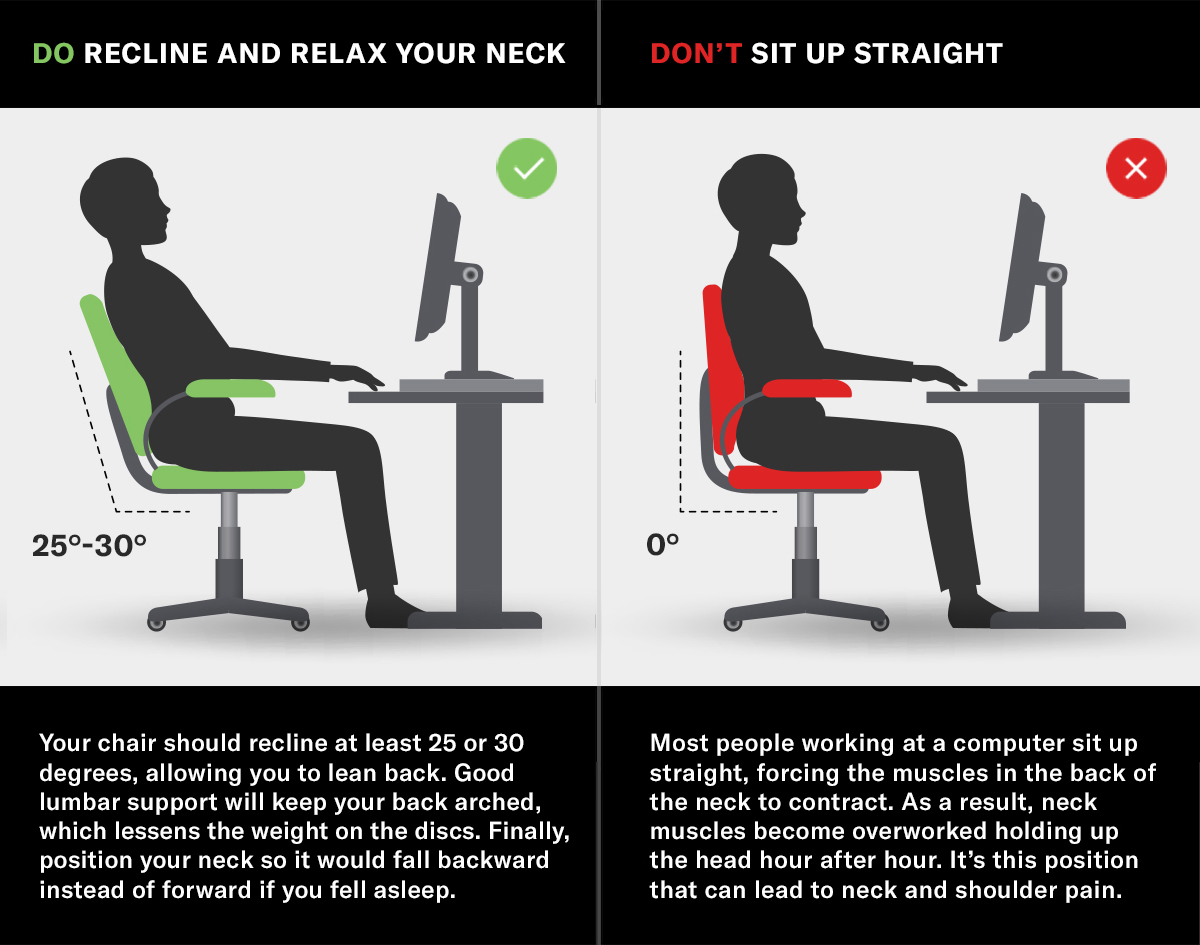
Maintaining good posture is one of the most effective ways to prevent cervical pain and promote spinal health. Poor posture is a common cause of neck pain, as it puts unnecessary strain on the cervical spine and surrounding muscles. Fortunately, with some simple adjustments and a commitment to maintaining good habits, you can improve your posture, reduce neck pain, and prevent cervical discomfort from becoming a long-term issue.
Why Posture Matters for Cervical Health
Keywords: improve posture for neck pain, cervical pain prevention tips
Your cervical spine, or neck, consists of seven vertebrae that support the head and allow it to move. Poor posture, especially when sitting or using devices, often leads to “forward head posture,” where the head juts forward instead of aligning with the spine. This misalignment strains the neck and upper back muscles, which can lead to chronic cervical pain.
1. Practice Good Posture at Your Desk
- Keep Your Monitor at Eye Level: Position your computer screen so that your eyes are level with the top third of the monitor. This reduces the tendency to look down and helps keep your head aligned with your spine.
- Sit Upright: Sit with your back straight, shoulders relaxed, and avoid hunching forward. A chair with good lumbar support can encourage proper posture.
- Keyboard and Mouse Position: Place your keyboard and mouse at a comfortable height to avoid raising or lowering your shoulders.
Pro Tip: Use a posture-correcting cushion or chair if needed to support the natural curve of your spine and prevent slouching.
2. Be Mindful of Screen Time and Phone Use
- Avoid Tech Neck: Looking down at a phone or tablet for long periods contributes to neck strain. Hold your device at eye level to keep your head in line with your spine.
- Take Regular Breaks: Every 30 minutes, take a short break to move around, stretch, and reset your posture. This helps prevent prolonged stress on your cervical spine.
3. Strengthen Core and Back Muscles
- Your core and back muscles play an important role in supporting your spine and maintaining good posture. Strengthening these muscles helps reduce the load on your neck.
- Core Exercises: Engage in exercises like planks, bridges, and pelvic tilts to strengthen your core muscles.
- Upper Back Exercises: Exercises such as rows and shoulder blade squeezes help to counteract the forward hunch and encourage a more upright posture.
4. Practice Proper Sleeping Posture
- Choose the Right Pillow: A pillow that supports the natural curve of your neck is essential. Memory foam and cervical pillows are often recommended to keep your neck aligned with your spine.
- Avoid Sleeping on Your Stomach: Stomach sleeping forces your neck to twist to one side, leading to strain. Sleeping on your back or side is generally better for spinal alignment.
- Maintain Neutral Spine Alignment: When lying down, make sure your neck and head are in a neutral position and not elevated too high or too low.
5. Incorporate Stretching and Mobility Exercises
- Regular stretching and mobility exercises can help improve flexibility in your neck and upper back, reducing stiffness and promoting better posture.
- Chin Tucks: Gently tuck your chin towards your chest and hold for a few seconds. This exercise strengthens neck muscles and aligns the cervical spine.
- Neck Rotations: Slowly turn your head from side to side, holding each position for a few seconds.
- Shoulder Rolls: Roll your shoulders up and back to relieve tension and open up the chest.
6. Keep Feet Flat on the Ground When Sitting
- Ensure that your feet are flat on the ground while sitting, and adjust the height of your chair if necessary. This simple step helps maintain the proper alignment of your hips, spine, and neck, contributing to overall better posture.
7. Engage in Mindfulness and Posture Checks
- Good posture is often a matter of developing awareness and making conscious adjustments throughout the day.
- Set Reminders: Use your phone or computer to set reminders every hour to check your posture.
- Practice Mindfulness: Take a few seconds throughout the day to notice your posture and make small corrections, such as relaxing your shoulders and straightening your back.
8. Consider Posture-Correcting Tools
- Using tools like posture correctors, lumbar support pillows, and ergonomic chairs can aid in maintaining proper alignment. These tools are especially helpful if you spend extended periods sitting.
9. Wear Supportive Footwear
- Surprisingly, your footwear affects your posture and spinal alignment. Wearing supportive, comfortable shoes helps maintain balance and reduces pressure on the spine. High heels or unsupportive shoes can cause you to lean forward, which may strain your neck.
10. Be Patient and Consistent
- Improving posture takes time and consistency. Habits form gradually, so make posture adjustments a part of your daily routine to see long-lasting benefits.
Additional Tips for Cervical Pain Prevention
- Stay Active: Regular physical activity keeps your muscles and joints healthy, reducing the risk of stiffness and strain.
- Hydrate: Proper hydration supports joint health, including the discs in your cervical spine.
- Avoid Heavy Bags: Carrying heavy bags on one side can strain your neck and shoulders. Use a backpack to distribute weight evenly or carry lighter loads.
Final Thoughts
Preventing cervical pain is achievable by maintaining good posture and adopting mindful habits. Making small adjustments to your sitting, standing, and sleeping postures can go a long way toward reducing neck strain and supporting spinal health. For persistent cervical pain, consult a healthcare provider for personalized advice and treatment. By prioritizing posture, you’re investing in a healthier neck and spine for years to come.

